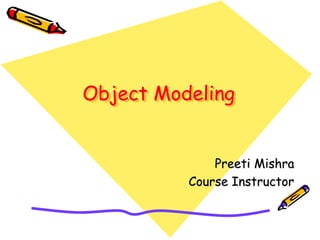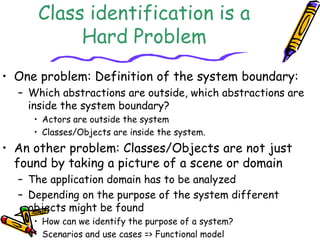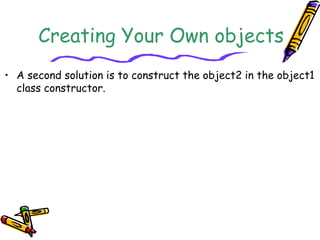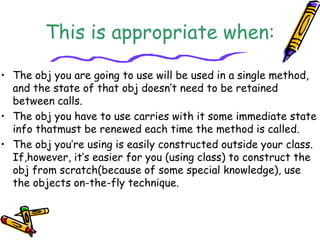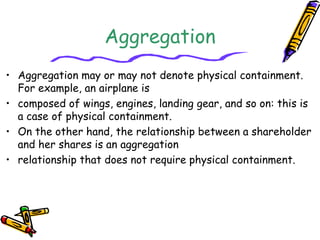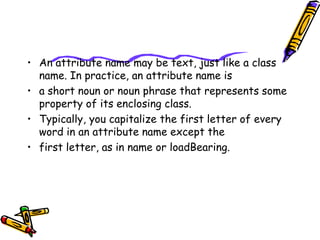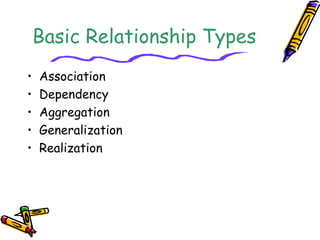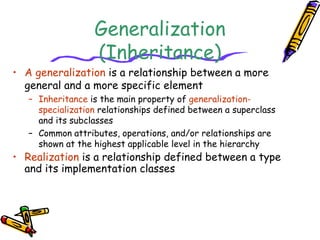Object modeling involves identifying important objects (classes) within a system and defining their attributes, operations, and relationships. During object modeling, classes are identified based on system requirements and domain concepts. Key activities include class identification, defining class attributes and methods, and determining associations between classes. Object modeling results in a visual representation of classes and their relationships in class and other diagrams.
